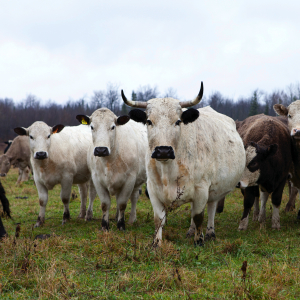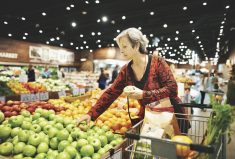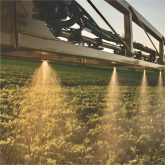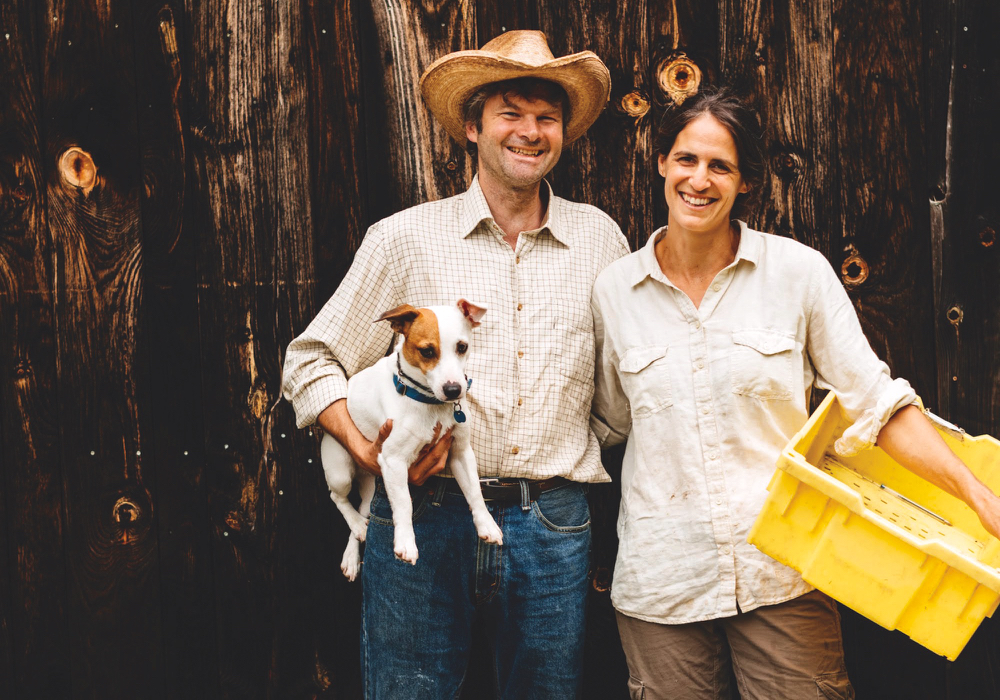We’re really selling the relationship, and the story of us,” says Harry Stoddart as he describes the markings on his White Park-cross cattle. The rare White crossbreed, he explains, is part of his story.
It’s because he can tell a story that I’m at Stoddart’s farm. His book, Real Dirt: An Ex-Industrial Farmer’s Guide to Sustainable Eating, is the story of his farming experience, along with his thoughts on sustainable farming and eating. I want to meet the storyteller.
He gave a copy of his book to well-known American writer Michael Pollan (once referred to in a New York Times book review as a liberal foodie intellectual). Pollan’s response: “It’ll piss everybody off, I’m sure, but I found it very persuasive on many points.”
Read Also

Youth focused on keeping Quebec’s dairy industry strong
In part two of our Making the Future series, Country Guide spoke with Béatrice Neveu from Rawdon, Que. (Read part…
I wondered if he might also turn off some consumers by questioning the organic movement’s distinction between natural and synthetic pesticides so bluntly, or by saying things such as, “A good portion of the discussion around genetic modification (GM) is guided by misinformed bullshit.”
Yet a Toronto foodie assures me, “He’s our Joel Salatin,” referring to the American farmer who is well known in food circles for his pasture-raised livestock. It’s a compliment that surprises me, considering that Stoddart doesn’t candy-coat his views.
When I see Stoddart on YouTube — and when I meet him in person — he seems low key. He isn’t in-your-face preachy, and his explanation of sustainable farming from a farmer’s perspective weaves his views of the food system into his own story of farming, failure, growth, change, and success. He puts a human face on the issues.
Whole hog
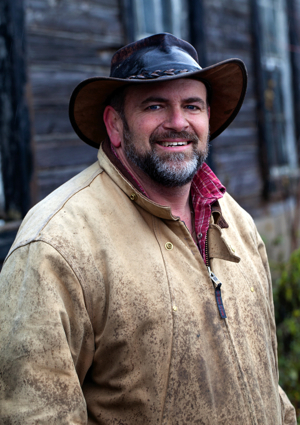
Stoddart is a sixth-generation farmer. He and his wife Silvia bought his parents’ machinery and livestock in 1995, and then the farm in 1996. Their aggressive plan was to double the sow herd on the confinement farrow-to-finish hog farm. But in less than a year, Stoddart found himself renegotiating financing with the bank after an outbreak of porcine respiratory and reproductive syndrome (PRRS).
“We got to count how many piglets would have been born, but instead of watching them grow, we shovelled up the dead bodies,” he writes.
Near bankruptcy, they kept the farm, but exited the hog business. Stoddart started commuting to a job in Toronto. “Being an agricultural economist, I could read financial statements about as well as most bankers. I had crunched the numbers in my head every way I could think of and had come to the inescapable conclusion that we would be better off if we shut down the hog operation and I got a job,” he says in the book.
He describes the shame he felt — and how he resigned from the local pork producers’ association in writing because he couldn’t face walking into a meeting in person.
But despite the shame and the stress, he considers the outcome lucky. Just as they were getting out of hogs, prices plummeted. Stoddart says the PRRS outbreak likely saved them from bankruptcy.
Organic without Kumbaya
Stoddart credits a neighbour with explaining the economics of organic production to him, and, in 1998, he grew his first certified organic crop. He was lucky to have rented 100 acres he could certify immediately.
The profit from the rented land and his off-farm salary underwrote the cost of converting the rest of the land to organic. “Most of us end up investing many dollars per acre to make the switch (to organic production) — without our mortgage and equipment payments changing. Our family’s food bill doesn’t change either,” he says.
“It’s getting from year zero to year five that is the challenge,” Stoddart says, comparing it to a salaried worker who gives up salary to go back to school for a new profession that might eventually pay more.
He switched to organic farming because he needed to make big changes for the farm to survive. “The external force that drove me to switch was near bankruptcy,” he says. It was a business decision. “The switch to organic wasn’t some magical event in our lives where we all sat around, held hands, and sang Kumbaya.
“I endured ridicule (most of it behind my back) when I switched to organic methods,” he writes. He also had some spectacular failures, although some fields, which probably looked like failures, actually earned more per acre than a conventional crop.
With an office job and commuting to Toronto, he was trying to balance farm and work. “I’d come home after a full day at the office and an hour commute, and work until conditions wouldn’t allow it or I was too sleepy to continue,” he recounts in the book. One year he booked vacation time in May so he could seed crops, but it rained the whole time.
He and his partner grew the organic cash-cropping business to 2,000 certified organic acres. But then something happened that concerned him. While sourcing additional organic flax to sell, he found he could buy fully cleaned organic flax from China — delivered to his farm — for less than Ontario flax straight off the combine.
Stoddart was concerned because organic grain now looked like a conventional agricultural commodity — and that was the business model he had just left behind.
Going commodity free
Today, the Stoddarts farm 560 certified-organic acres, and the focus now is on grass-fed and pastured livestock: beef, lamb, pork, and chicken. No more cash crops. “We decided we needed a direct-to-consumer business in which our customers valued what we were doing and would not sell us down the river for a few dollars a tonne,” he writes.
Making a change wasn’t as difficult this time. It took five years for them to work out their current community-supported agriculture (CSA) meat-share program in which consumers purchase a share of the meat “harvest.” This direct-to-consumer model, he feels, is economically sustainable.
As Stoddart starts telling me about the sheep, he sees an animal down and puts our conversation on hold while he hustles over to see how bad things are. Luckily this sheep is just having trouble getting off its back. He helps it upright, and we keep talking as it rejoins the flock. These sheep, he explains, have been selected by Silvia for the fleece, which Silvia dyes and sells directly through their wool-share program. Subscribers get one skein of the hand-dyed yarns every other month.
The White Park cattle need to be more than a nice story. Stoddart says that the meat has to be very good, i.e. good enough to fetch a higher price. Rare breeds and grass feeding, he explains, add costs.
On selling
It takes Stoddart about 90 minutes to get into Toronto, so travel time was a problem when they were going into the city twice weekly for markets and restaurants. “It put a big ding in our lifestyle,” he says as he talks about missed 4-H meetings with the kids.
Stoddart no longer sells to restaurants, which, with menus that continually change, tend to be less reliable customers. He prefers selling straight to consumers, who, individually, are not as big a portion of what he is selling, giving a more diverse base. Now, they go to Toronto twice a month to deliver to CSA customers. “It’s those long-term customers who you can count on,” he says.
He’s not nostalgic. “I’m quite happy never to go to market,” says Stoddart. His advice to farmers not sure how good they might be at hobnobbing: “You’ve just got to go do it. It’s a skill that can be learned like anything else.”
When selling directly to consumers he’s found it’s important to realize that what’s obvious to farmers might not be obvious to consumers. He’s had market customers ask for corn in June. He even had a customer ask if a lamb had to die for the lambskins he was selling.
But you also have to respect your customers, and to understand that their lack of knowledge isn’t their fault. “If you have a dim view of them,” Stoddart warns, “that comes through in conversation.”
On continuing to change
The Stoddarts grew five acres of vegetables for a couple of years. “I’d probably skip the market garden,” he says, explaining that it was very labour intensive and they were a couple of weeks behind growers southwest of Toronto. The other thing he now knows is that he’s not so great at running a crew. “We found out I didn’t like managing people,” he says, talking about the summer they had six people working on the farm.
He believes in the importance of taking the time to think about what you want in life outside of farming, because when farming, business and life become so entangled, it’s easy to lose sight of the goals for each. “Where we are today is the accumulation of what we’ve learned about where we want to be for lifestyle, and what we’re good at,” he says.
He has sold about 1,000 books, a respectable number for a self-published volume. A number of farmers in his area bought the book. “I got fairly good feedback from most of them,” he says.
In the book he advises, “Choosing sustainable agriculture involves more than choosing a particular brand or label at your local supermarket. It involves gaining an understanding of the myriad dimensions of sustainability in agriculture.” His stories put a human face on these myriad dimensions. Even if they piss everybody off.
It’s a story of farming, failure, growth, and change. The change is easier for him now. “The first time I did it, it wasn’t by choice,” he remembers with a chuckle. “It’s easy to cross the bridge when it’s burning behind you.”


